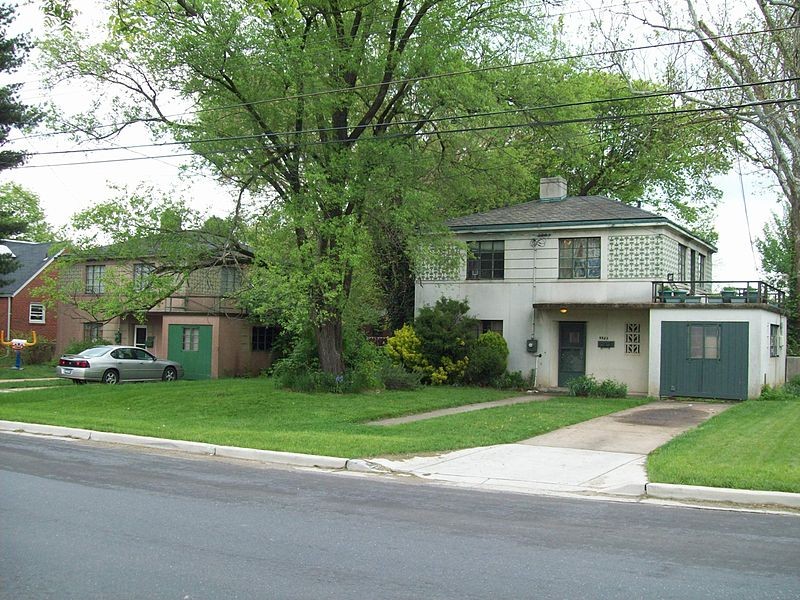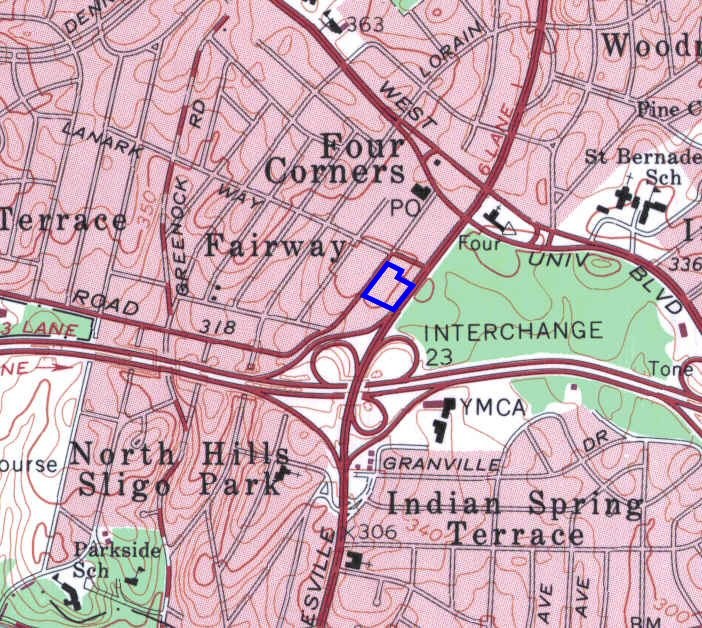Polychrome Historic District
Introduction
Text-to-speech Audio
Images
Polychrome Historic District by Pubdog on Wikimedia Commons (Public Domain)

Map of Polychrome Historic District, courtesy of Maryland Historic Trust (reproduced under Fair Use)

Backstory and Context
Text-to-speech Audio
These five homes were built by John Joseph Earley in 1934 and 1935. Earley used precast concrete panels with brightly colored aggregate to produce the polychrome effect, with Art Deco details such as chevrons along friezes. Early's process stripped the concrete to reveal the colorful aggregate stone composing the panel. The concrete panels are decorative rather than load-bearing. Earley was interested in the use of mass-production to produce small, inexpensive houses.
Two of the polychrome houses (9900 and 9904 Colesville Road) stand on Colesville Road and are each one story. Earley designed one of them in collaboration with architect J. R. Kennedy. Each of the three houses on Sutherland Road (9919, 9923, and 9925 Sutherland Road) is two stories with an attached carport. They are identical in design and floor plan, only differing in color.
The houses have served as single-family homes continuously since their construction, with few renovations. The National Register of Historic Places recognized the five houses as a historic district in 1995.
Sources
Art Deco Society of Washington. Polychrome Houses, Art Deco Society of Washington. Accessed May 5th 2020. http://www.adsw.org/buildings/polychrome-houses#ad-image-0.
Historic American Buildings Survey. Polychrome House No. 1, 9900 Colesville Road (U.S. Route 29), Silver Spring, Montgomery County, MD, Library of Congress. Accessed May 5th 2020. http://loc.gov/pictures/item/md1362/.
Kelly, Clare Lise. John Joseph Earley, pioneer of decorative and architectural concrete, The Third Place. June 14th 2016. Accessed May 5th 2020. http://montgomeryplanning.org/blog-design/2016/06/john-joseph-earley-pioneer-of-decorative-and-architectural-concrete/.
Maryland Historic Trust. Polychrome Historic District, National Register Properties in Maryland. 2018. Accessed May 5th 2020. https://mht.maryland.gov/nr/NRDetail.aspx?NRID=1171&FROM=NRMapMO.aspx.
Terry, Constance Peterson. Polychrome Historic District, National Register of Historic Places Registration Form. August 1st 1995. Accessed May 5th 2020. https://mht.maryland.gov/secure/medusa/PDF/NR_PDFs/NR-1169.pdf.
https://commons.wikimedia.org/wiki/Category:Polychrome_Historic_District#/media/File:Polychrome_Historic_District_Apr_10.JPG
https://mht.maryland.gov/nr/map/nrb1171.jpg
